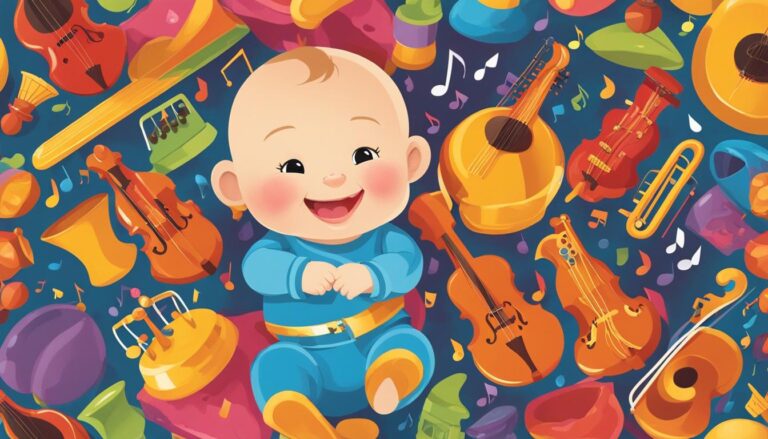The Science Behind Baby’s Laugh: Why It’s Important
As a journalist specializing in baby care and child development, I am always fascinated by the wonders of infancy. One particular phenomenon that has captivated researchers and parents alike is the sound of a baby’s laughter. But why is something as seemingly simple as a giggle so important? Let’s delve into the science behind baby laughter and explore its significance in child development.
Key Takeaways:
- Babies start laughing before they can speak, making laughter one of the earliest forms of human communication.
- Laughter serves as a powerful source of human connection and bonding.
- Tickling, peekaboo, and funny voices are some of the main triggers of baby laughter.
- Laughter promotes relaxation, comfort, and social interaction in babies.
- Studying baby laughter can provide valuable insights into cognitive and emotional development.
The Origins of Baby Laughter: Evolutionary and Developmental Perspectives
Understanding the origins of baby laughter provides fascinating insights into the evolutionary and developmental aspects of this universal human behavior. Baby laughter has deep roots in our primate and mammalian ancestors, as they too engaged in vocalizations during play that resemble laughter. This suggests that laughter serves an important social function, promoting bonding and communication within social groups. In fact, the neural circuitry for laughter is found in all animal brains, including humans, further highlighting its significance in our evolutionary history.
Infants possess the ability to laugh even before they acquire language skills, underscoring the importance of laughter in early development. When babies laugh, it activates pleasure systems in the brain and serves as a powerful social signal of happiness and joy. Research has shown that infants as young as 5 months old can distinguish between ordinary and absurd events, finding the latter humorous. This implies that infants possess a basic understanding of the physical and social world, allowing them to appreciate and respond to humor.
“Humor is a universal language that transcends age and culture. It is a form of communication that babies use to express their enjoyment and share their experiences with others.”
Humor in infants is based on incongruity, where their expectations are violated, leading to laughter. This demonstrates their cognitive abilities and the early stages of their developing sense of humor. Baby laughter is a genuine response that provides valuable insights into infants’ awareness and understanding of others’ minds. It is a primitive form of communication and an essential part of their social and emotional development.
| Age | Key Findings |
|---|---|
| 3 months | Babies begin laughing |
| 5 months | Ability to distinguish between ordinary and absurd events |
| — | — |
The Value of Studying Baby Laughter and Future Research
Studying baby laughter provides valuable insights into pediatric health and the various factors that contribute to infants’ overall well-being. By understanding what makes babies laugh, we can develop interventions to support their development, including those with specific needs, such as individuals with autism or Down syndrome.
Advancements in technology, such as eye tracking and electroencephalography, have allowed researchers to delve deeper into the study of brain development in infants. This research opens up new possibilities for understanding how laughter and humor impact cognitive and emotional development in babies.
One notable project, led by Dr. Caspar Addyman, involves crowdsourcing data from parents to explore the causes of baby laughter. Preliminary findings from the Baby Laughter project indicate that funny voices, tickling, peekaboo, and blowing raspberries are common triggers for baby laughter.
While traditional theories suggest that baby laughter starts around three months old, recent studies challenge this notion, showing that laughter can occur as early as one to three months. Further research is needed to investigate the impact of baby laughter on learning, social interaction, and overall well-being.
Contributing to Pediatric Health and Safety
Studying baby laughter also has implications for pediatric health and safety. By understanding what brings joy and laughter to infants, we can create environments that promote their happiness and ensure their safety. When combined with knowledge of breastfeeding, baby sleep, feeding techniques, and baby safety, a comprehensive understanding of baby laughter can lead to improved care and well-being for infants.
In conclusion, the study of baby laughter provides valuable insights into human development, interventions for various developmental groups, and our understanding of resilience and happiness. Ongoing research in this field will continue to shed light on the significance of baby laughter and its impact on pediatric health, cognitive development, and emotional well-being.
FAQ
Why is baby laughter important?
Baby laughter serves as a powerful source of human connection and bonding. It is one of the earliest forms of communication, allowing babies to express their enjoyment and share experiences with others.
When do babies start laughing?
Studies have found that babies begin laughing as early as 3 months old. It is a natural and instinctive response to certain stimuli.
What activities make babies laugh?
Babies often laugh during games like peekaboo, tickling, and being teased. They find funny voices, blowing raspberries, and unexpected movements to be particularly amusing.
Does baby laughter play a role in their development?
Yes, laughter aids in babies’ learning process and helps them develop and master new skills. It also promotes relaxation, comfort, and social interaction.
Are there any studies on baby laughter?
Researchers are still exploring the science of baby laughter and its impact on cognitive and emotional development. Technologies like eye tracking and electroencephalography have advanced our understanding of brain development in infants.
How can studying baby laughter contribute to positive psychology?
Studying baby laughter provides insights into resilience, happiness, and human development. Understanding what makes babies laugh can inform interventions for different developmental groups, such as individuals with autism or Down syndrome.
What is the Baby Laughter project?
The Baby Laughter project, led by Dr. Caspar Addyman, involves crowdsourcing data from parents to explore what makes babies laugh. Preliminary findings show that funny voices, tickling, peekaboo, and blowing raspberries are the main causes of baby laughter.
Is baby laughter a genuine response?
Yes, baby laughter is a genuine signal of relaxation, enjoyment, and happiness. It serves as an important tool for studying the psychology of humans.
What future research is needed in the field of baby laughter?
Further research is needed to explore the impact of baby laughter on learning, social interaction, and overall well-being. Continued studies can contribute to our understanding of brain development, resilience, and happiness.
Source Links
- https://ideas.ted.com/meet-a-scientist-with-a-most-delightful-job-he-studies-baby-laughter/
- https://www.independent.co.uk/news/science/revealed-the-serious-science-behind-a-baby-s-laugh-8225400.html
- https://www.scientificamerican.com/article/laughing-matters-mdash-and-helps-to-explain-how-babies-bond/






